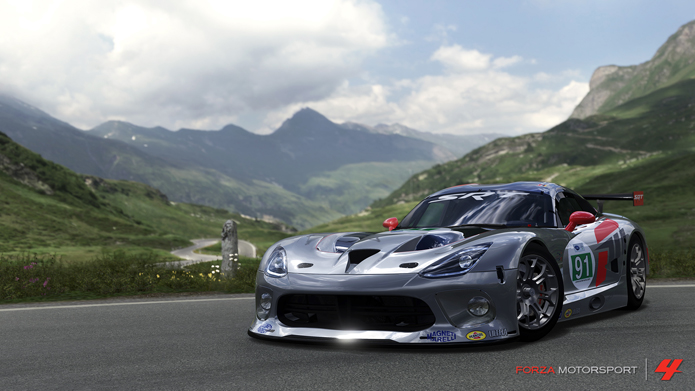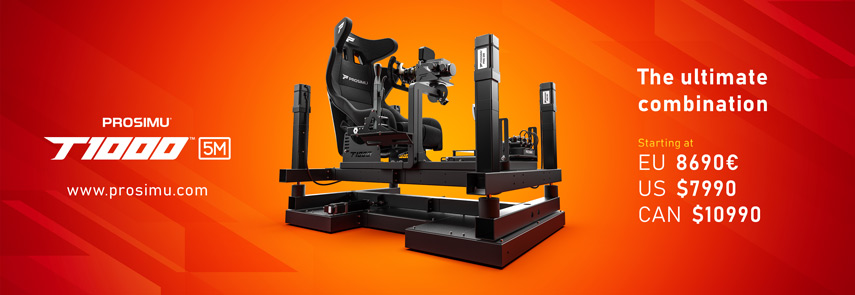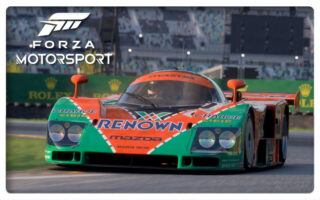![]()

The September Pennzoil Car Pack |
| The September Pennzoil Car Pack for Forza Motorsport 4 is coming next week! This add-on pack will be available on Xbox LIVE on Tuesday, September 4. For a cost of 560 MS Points you can add some of the most classic cars from all around the world and race both of the 2013 Viper GTS-R models. The Vipers sponsored by Pennzoil (#93) and Forza Motorsport (#91) are the latest competitors in the American Le Mans Series. Oh, and don’t forget the GMC Vandura; this rig is just begging for a livery contest. Here’s the list of all 11 (yes that’s right we said eleven!) cars available in the September Pennzoil Car Pack: 2013 Viper #91 SRT Motorsport GTS-R A mid-season entry in the American Le Mans Series for 2012, the #91 Viper is sponsored by Forza Motorsport. In both of the races it has competed in the 2012 season, drivers Kuno Wittmer and Dominik Farnbacher have achieved top ten finishes. Each race provides the team with another chance to coordinate driver changes, increase the efficiency of pit stops, and to collect data. The Viper’s monster 8.4 liter V-10 is reduced to 8 liters by changing cylinder bore and stroke, and the car requires a restrictor on the engine’s intake to maintain parity within the GT class. The engine runs on E85 and carries 110 liters of fuel, almost double the capacity of its stock brethren. Meeting all the ALMS requirements and keeping the car as close to stock in appearance was no small feat. The team achieved a nearly identical twin to the road-going cousin after many digital iterations and the use of Computational Fluid Dynamics. One of the most beautiful cars ever built, the lightweight powerful Alfa Romeo 33 Stradale also holds the record of being the most expensive new car sold in the US of its time at around $17,000. Initially as many as three of the extremely rare Stradale came to North America, but now only one remains on the continent. The car modeled for Forza Motorsport 4 is part of one of the greatest private collections of Italian cars in the world. These cars were ahead of their time, using butterfly-style doors, large wrap-around glass, twin-spark ignition, dual-overhead cams, a six-speed Coletti transmission, and plenty of lightweight magnesium parts. As you start the two-liter V8 engine, it doesn’t take long to realize the powerplant is only inches behind your head. With an RPM redline of 9,500–outrageous for 1968–you hear a symphony of sound from rumble to scream. Most legends come from humble beginnings, and the story of the Corvette is no different. In an era where the only true sports cars were built in Europe Chevy saw an opportunity. The company went about building a dream team to design a car that would appeal to a younger market, give the brand some flash, and keep it ahead of Ford in sales. Harley Earl—GM’s then design chief—let fly with an idea he had been coveting for more than a year since watching European sports cars at Watkins Glen: a low to the ground, two-seat roadster. Driven by practicality, the 1953 Corvette uses mostly off-the-shelf components such as the “Blue Flame” 160 hp, 235 cubic inch, in-line, six-cylinder and two-speed Powerglide transmission. The only options available were a heater ($91) and an AM radio ($145). All 300 that sold in 1953 had both options. The 1953 Corvette didn’t even have rollup windows. All the cars were hand-built, and all were Polo White with red interiors. The use of fiberglass was not only a weight-saving innovation but was a necessity due to the Korean War and a limited availability of steel. The 1953 Corvette’s dramatic and bold exterior was just what the public wanted and it forever changed the course of American car history. In the mid-1960s, the MGB GT offered European refinement for a price the average car buyer could afford. A fastback-style roof, designed by Pininfarina, and accommodating headroom for driver and passenger made for comfortable road-going ability. The car’s raspy in-line four cylinder delivers almost 100 hp, more than enough to make driving the MGB GT an exciting exercise. For its time, performance was considered brisk; it was lightweight and featured fine handling as its strong points. The MGB was a relatively modern design, utilizing a monocoque structure. This reduced manufacturing costs while adding to the overall strength of the car. The MGB was also one of the first cars to include controlled crumple zones to protect both driver and passenger. A treasured masterpiece, the original Mercedes-Benz 300 SLR is housed in a glass case at the Mercedes museum. Never again will it see the pavement or the risks of racing. In fact, it may be one of the most valuable cars in the world. Driven by a young Stirling Moss and co-driven by journalist Denis Jenkinson, it won the 1955 Mile Miglia rally in record-breaking time and achieved incredible speed–a full 32 minutes faster than Juan Manual Fangio, who placed second in the other 300 SLR. Moss’s record time to finish the famed Mille Miglia in the 300 SLR has, to this day, not been beaten. The 300 SLR’s straight 8-cylinder engine, with state-of-the-art fuel injection and desmodromic valve actuation, gave high-revving reliable power. Depending on the tune applied and fuel type used, the car produced between 276 and 310 hp. Sadly 1955 also saw the end of Mercedes’ works-supported racing after the tragic accident at Le Mans. Mercedes did win the 1955 sports car championship, despite retiring at Le Mans out of respect for those who died. Later Sir Stirling Moss was invited on several occasions to relive the 300 SLR’s glory in vintage races before it was permanently retired. Charismatic, practical, stylish and attractive are just a few words that describe the new DS4. Citroën says “The look combines coupe style with 2+2 practicality.” That it does, and the elegance that is exuded on the outside reaches to the interior as well with heavy doses of leather and chrome to appease the eye. The motor delivers a healthy and potent 197 horsepower to get up and go. For predictable and well-managed braking, the DS4 is equipped with large-diameter ventilated disc brakes, assisted by not only ABS, but also EBD (Electronic Brake force Distribution) and EBA (Emergency Brake Assist). Ergonomics and minimizing environmental impact have been balanced and prioritized in the design as well, delivering comfort, convenience and that good feeling that goes with “being green.” |
|
Official Webpage – http://forzamotorsport.net |
|
|
 Bsimracing Sim Racing Resources and News for the racing enthousiast.
Bsimracing Sim Racing Resources and News for the racing enthousiast.








